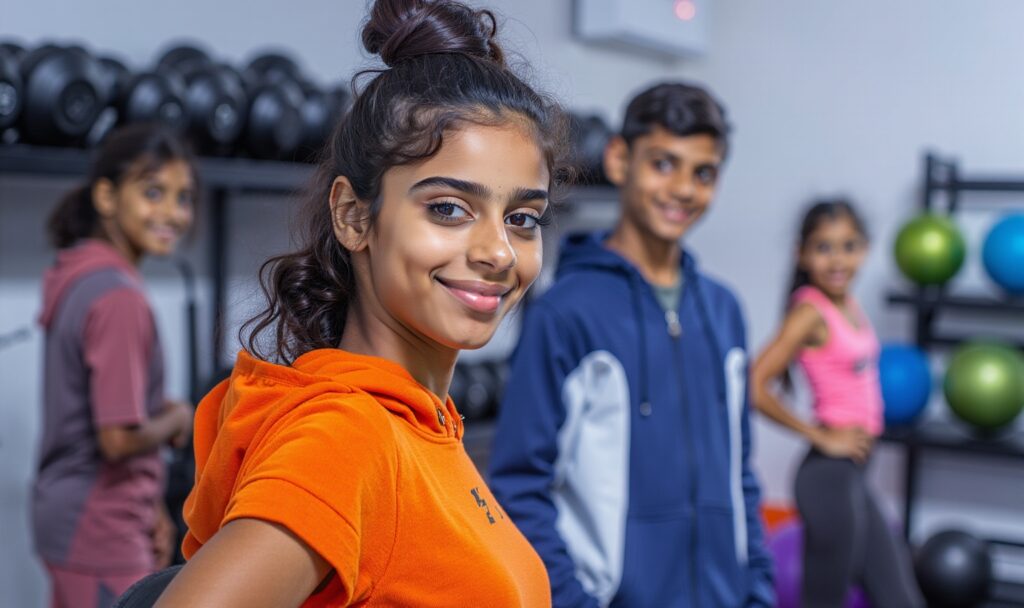Menu
Module 3: Does Age Have a Bearing on Fitness?
- Home
- Module 3: Does Age Have a Bearing on Fitness?

Fitness isn’t a one-size-fits-all journey. As we age, our body’s needs, capabilities, and recovery processes shift, making it essential to adapt our workout routines. Whether you’re in your teens or your sixties, the key to long-term health is consistency, smart training, and adjusting your approach as your body evolves.
Teens (13 – 19): Build Strong Habits
This is the perfect time to build strong habits. Focus on mastering movement patterns like squats, push-ups, and pull-ups. Prioritize overall athletic development through sports, body-weight exercises, functional exercises, and learning proper lifting techniques.
20s: Strength, Endurance & Peak Athleticism
Your 20s are when your strength, endurance, and athleticism are at their peak. This is the best time to push your limits with structured strength training and high-intensity workouts. Establish a well-rounded fitness routine that includes cardio, mobility, and recovery.
30s: Maintaining Muscle Mass & Managing Work-Life Balance
Life gets busier, and work-life balance becomes a challenge. Maintaining muscle mass through strength training should be a priority. Recovery also plays a bigger role. Incorporate mobility drills and stress-reducing activities like yoga or meditation.
40s: Prioritising Mobility, Joint Health & Injury Prevention
By your 40s, joint health and mobility need extra attention. While strength training remains essential, adding flexibility & mobility training will help prevent injuries and keep movement pain-free. Activities like Pilates and dynamic stretching can improve range of motion and reduce stiffness.
50s: Strength Training for Longevity & Muscle Preservation
Muscle loss begins to accelerate in your 50s. The solution? Strength-based workouts, especially compound movements like squats and deadlifts, are important to preserve muscle and bone density. Stay active with low-impact cardio like swimming or cycling.
60s+: Balance, Flexibility & Preserving Independence
In your 60s and beyond, preserving mobility and preventing falls should be a top priority. Focus on flexibility & mobility training, balance drills, and light resistance exercises to maintain strength. Functional movements that mimic daily activities will help keep you independent for years to come.
Fitness isn’t about age; it’s about adaptation. By making the right changes at the right time, you can stay strong, mobile, and active for decades to come. The best workout plan? The one that evolves with you!
And age is just a number. What matters is how you adapt your fitness routine to meet your body’s evolving needs. Whether you’re lifting heavy in your 20s or prioritizing mobility in your 60s, the goal remains the same: to stay active, healthy, and strong for life.
Start training smart today. Your future self will thank you!

The teenage years are a crucial time to build a strong foundation in fitness. With growing bodies and changing hormones, this stage presents the best opportunity to develop strength, agility, and healthy habits that last a lifetime. Rather than focusing on aesthetics or extreme workouts, teens should emphasize balanced training that enhances performance, prevents injuries, and fosters consistency.
A well-rounded fitness routine for teens should focus on developing strength and agility rather than chasing quick fixes or heavy lifting without guidance. Here’s why:
Functional Fitness is one of the most effective training approaches for teens, as it mimics real-life movements and enhances overall athleticism. Instead of isolating muscles, it focuses on full-body exercises that improve coordination, strength, and endurance. Examples include:
For teens with busy schedules, HIIT (High-Intensity Interval Training) is a fantastic way to stay active without long workout sessions. HIIT workouts alternate between bursts of high-effort exercise and short rest periods, helping teens:
Establishing the right habits in teenage years creates a foundation for lifelong health. Key principles include:
By incorporating Functional Fitness and HIIT into their routine, teens can build a well-rounded fitness foundation that supports strength, agility, and long-term health. The habits they form now will shape their fitness journey for years to come, helping them lead an active, energetic, and injury-free life.